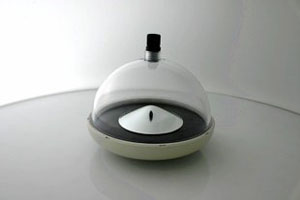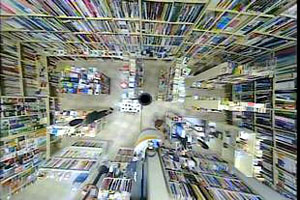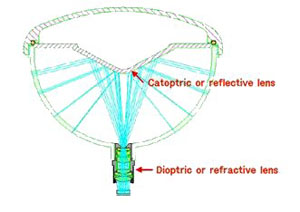The classic fish-eye lens gives photographers the visual equivalent of surround sound, capturing an all-encompassing view. But, while the results are dramatic the subject is considerably distorted to fit within the bounds of the circular image formed. This renders such lens ineffective as an all-seeing-eye in a security setting or for providing robots with better navigation.
South Korean researchers have now designed and built an inexpensive optical lens that collects light from a large area and produces an almost distortion-free wide-angle image with the more familiar rectangular shape.

Nothing fishy about this wide-angle lens (Credit: Gyeong-il Kweon, Honam University, et al.)
For spacious places with high ceilings such as factories, hotels, theatres, resorts, and auditoriums, the lens can capture the entire floor and this will help security personnel to easily monitor those places, explains team leader Gyeong-il Kweon of Homan University, In this scenario, the lens would be attached to inexpensive, commercially available bullet cameras.
Kweon likens the new lens to an immaculate silver spoon. As any child bored with their food knows looking into the bowl of a spoon offers you a view of the whole dining room. But, there is an important difference. That reflection is as distorted as the fish-eye view where straight lines become curved, and distances between objects are shortened or exaggerated. Kweon and his colleagues have now created the perspectively correct, lens. The most creative part of our work was the discovery of the right shape of the spoon which gives a perspectively correct image of the room, Kweon says.
The result is a piece of optical technology that resembles the dome of St Paul’s Cathedral in London. Light from the area surrounding the lens dome hits a V-shaped mirror within. This reflective lens then redirects the light rays to a second lens that resembles the slender sculpture at the peak of the dome. This refractive lens produces a sharp image of the large area at the exact location of the image sensor within the bullet camera.

Wide-eyed and undistorted (Credit: Gyeong-il Kweon, Honam University, et al.)
Kweon points out that other researchers have attempted to solve the fish-eye problem before, but his is the first that produces near-perfect images and is more than an academic curiosity. The new lens is comprised of inexpensive components amounting to less than £50 ($100) and a prototype for improved indoor security has already been tested. An outdoor version can be made for a larger camera and this lens could be installed on intersections to monitor traffic violations and pedestrians.”

The inner workings of the all-seeing lens (Credit: Gyeong-il Kweon, Honam University, et al.)
Further reading
Appl. Optics, 2006
http://ao.osa.org/abstract.cfm?id=118232
Nanophotonics Co. Ltd homepage
http://www.nanophotonics.co.kr/
Suggested searches
lenses